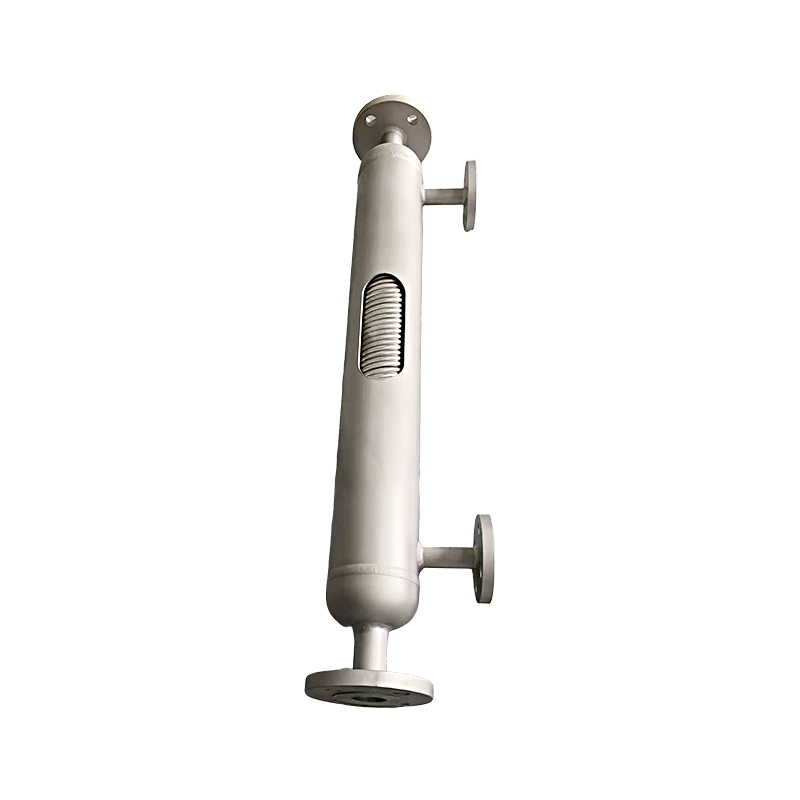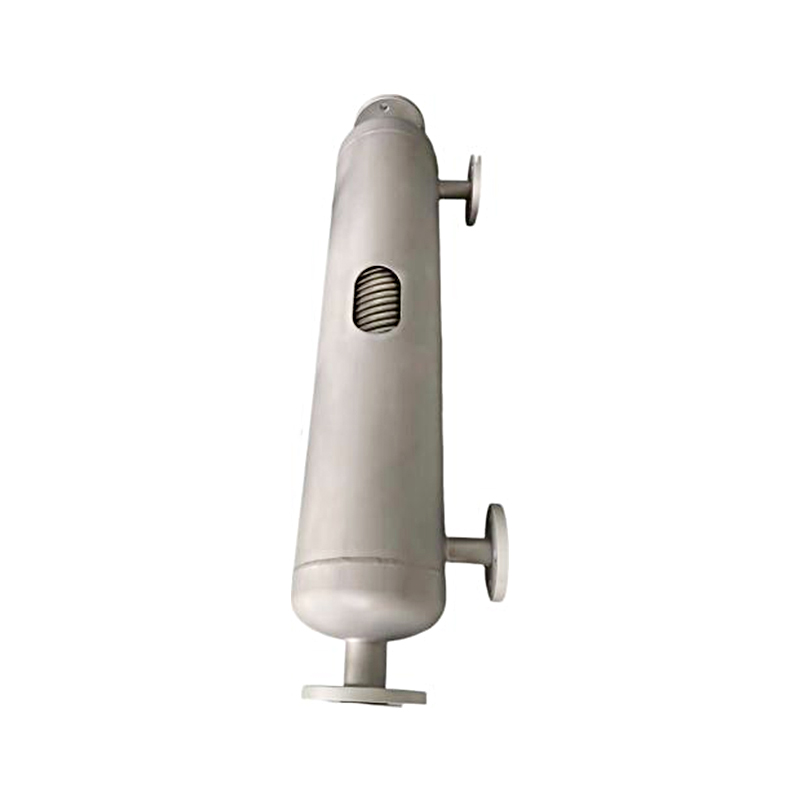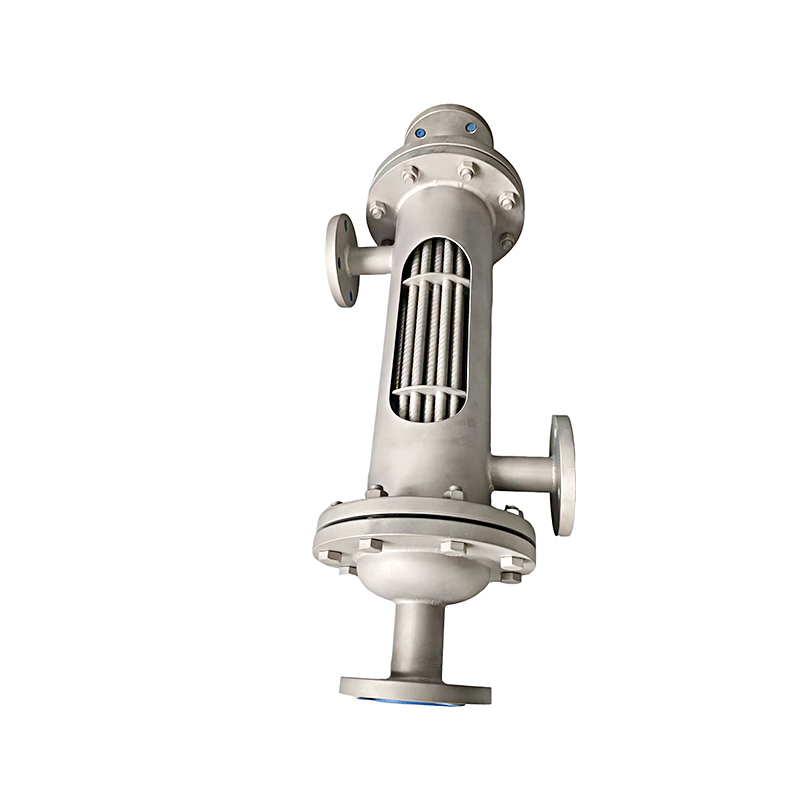How is the design of stainless steel spiral wound tube heat exchanger adapted to extreme temperature conditions?
Release Time : 2025-05-20
Stainless steel spiral wound tube heat exchanger shows excellent adaptability under extreme temperature conditions, thanks to its unique design and selected high-quality materials. Whether it is facing liquefied natural gas processing in extremely cold environments or heat recovery in high-temperature industrial processes, this heat exchanger can work stably to ensure efficient and safe operation.
First of all, material selection is one of the key factors that determine whether the stainless steel spiral wound tube heat exchanger can cope with extreme temperature conditions. Usually high-quality stainless steel is used as the main material. This type of material not only has excellent corrosion resistance, but also can withstand a wide range of temperature changes from low temperature to high temperature. In particular, some specific grades of stainless steel alloys can still maintain good mechanical strength and stability under extreme temperatures. In addition, the material can be modified through advanced metallurgical technology, such as heat treatment or cold working hardening, which can further improve the performance of the material and make it more suitable for use requirements under extreme working conditions.
Secondly, structural design is also an important guarantee for the stainless steel spiral wound tube heat exchanger to adapt to extreme temperatures. The spiral winding structure gives the equipment a unique geometric shape. Compared with traditional straight tube heat exchangers, it has a larger surface area and a smaller volume ratio, thereby improving the heat transfer efficiency. More importantly, this design allows a certain degree of elastic deformation during thermal expansion and contraction, effectively alleviating the stress concentration problem caused by temperature changes. Therefore, in an environment with large extreme temperature fluctuations, the stainless steel spiral wound tube heat exchanger is not easily deformed or damaged due to thermal expansion and contraction, ensuring long-term stable operation.
Furthermore, considering the additional challenges that extreme temperature conditions may bring, such as the risk of brittle fracture at low temperatures or the tendency of oxidation corrosion at high temperatures, manufacturers will also take a series of targeted measures to enhance the resistance of the equipment. For example, in low-temperature applications, stainless steel materials with higher toughness may be selected, and the welding process is optimized to ensure that the joints also have excellent low-temperature toughness; in high-temperature environments, anti-oxidation coatings or surface treatment technologies are used to prevent oxidation corrosion of the metal surface. These careful considerations in details enable the stainless steel spiral wound tube heat exchanger to perform well under various harsh conditions.
In order to further improve the reliability of the equipment, some high-end products also integrate intelligent monitoring systems. The system can monitor the changes of key parameters such as temperature and pressure in real time, and automatically adjust the operation mode according to the actual operating conditions to avoid potential failures. For example, when abnormally high temperature is detected, the system can promptly issue an alarm and start the cooling mechanism to prevent component damage caused by overheating; conversely, when encountering ultra-low temperature conditions, it can also respond quickly and take corresponding insulation measures. This intelligent management method not only enhances the safety of the equipment, but also provides users with a convenient operation experience.
In addition, customized solutions are particularly important for the specific needs of different application scenarios. For scenarios that need to work at extremely low temperatures, such as liquefied natural gas (LNG) facilities, in addition to selecting suitable materials, it is also necessary to consider how to minimize heat loss. At this time, an efficient insulation layer can be added during the design stage, and a multi-layer composite material can be used to build an effective thermal insulation barrier to prevent external heat from entering the system. For applications in high-temperature environments, such as steel smelting or chemical production, it is necessary to focus on heat dissipation design to ensure that excess heat can be dissipated in time to maintain the normal operation of the system.
Finally, maintenance strategies are essential to extend the service life of stainless steel spiral wound tube heat exchangers under extreme temperature conditions. Regularly checking the working condition of each part of the equipment, especially the seals and connections, and promptly discovering and repairing possible problems can help prevent major accidents. At the same time, follow the correct cleaning and lubrication guidelines to avoid equipment performance degradation due to scale accumulation or increased friction.
In summary, the stainless steel spiral wound tube heat exchanger has successfully overcome the challenges brought by extreme temperatures with its selected materials, innovative design and comprehensive protection measures. Whether in severe cold or hot environments, it can perform tasks stably and reliably to meet the needs of various industrial processes. With the advancement of technology, the stainless steel spiral wound tube heat exchanger will continue to make breakthroughs in material science, manufacturing processes and intelligent control in the future to provide users with more efficient and durable products.
First of all, material selection is one of the key factors that determine whether the stainless steel spiral wound tube heat exchanger can cope with extreme temperature conditions. Usually high-quality stainless steel is used as the main material. This type of material not only has excellent corrosion resistance, but also can withstand a wide range of temperature changes from low temperature to high temperature. In particular, some specific grades of stainless steel alloys can still maintain good mechanical strength and stability under extreme temperatures. In addition, the material can be modified through advanced metallurgical technology, such as heat treatment or cold working hardening, which can further improve the performance of the material and make it more suitable for use requirements under extreme working conditions.
Secondly, structural design is also an important guarantee for the stainless steel spiral wound tube heat exchanger to adapt to extreme temperatures. The spiral winding structure gives the equipment a unique geometric shape. Compared with traditional straight tube heat exchangers, it has a larger surface area and a smaller volume ratio, thereby improving the heat transfer efficiency. More importantly, this design allows a certain degree of elastic deformation during thermal expansion and contraction, effectively alleviating the stress concentration problem caused by temperature changes. Therefore, in an environment with large extreme temperature fluctuations, the stainless steel spiral wound tube heat exchanger is not easily deformed or damaged due to thermal expansion and contraction, ensuring long-term stable operation.
Furthermore, considering the additional challenges that extreme temperature conditions may bring, such as the risk of brittle fracture at low temperatures or the tendency of oxidation corrosion at high temperatures, manufacturers will also take a series of targeted measures to enhance the resistance of the equipment. For example, in low-temperature applications, stainless steel materials with higher toughness may be selected, and the welding process is optimized to ensure that the joints also have excellent low-temperature toughness; in high-temperature environments, anti-oxidation coatings or surface treatment technologies are used to prevent oxidation corrosion of the metal surface. These careful considerations in details enable the stainless steel spiral wound tube heat exchanger to perform well under various harsh conditions.
In order to further improve the reliability of the equipment, some high-end products also integrate intelligent monitoring systems. The system can monitor the changes of key parameters such as temperature and pressure in real time, and automatically adjust the operation mode according to the actual operating conditions to avoid potential failures. For example, when abnormally high temperature is detected, the system can promptly issue an alarm and start the cooling mechanism to prevent component damage caused by overheating; conversely, when encountering ultra-low temperature conditions, it can also respond quickly and take corresponding insulation measures. This intelligent management method not only enhances the safety of the equipment, but also provides users with a convenient operation experience.
In addition, customized solutions are particularly important for the specific needs of different application scenarios. For scenarios that need to work at extremely low temperatures, such as liquefied natural gas (LNG) facilities, in addition to selecting suitable materials, it is also necessary to consider how to minimize heat loss. At this time, an efficient insulation layer can be added during the design stage, and a multi-layer composite material can be used to build an effective thermal insulation barrier to prevent external heat from entering the system. For applications in high-temperature environments, such as steel smelting or chemical production, it is necessary to focus on heat dissipation design to ensure that excess heat can be dissipated in time to maintain the normal operation of the system.
Finally, maintenance strategies are essential to extend the service life of stainless steel spiral wound tube heat exchangers under extreme temperature conditions. Regularly checking the working condition of each part of the equipment, especially the seals and connections, and promptly discovering and repairing possible problems can help prevent major accidents. At the same time, follow the correct cleaning and lubrication guidelines to avoid equipment performance degradation due to scale accumulation or increased friction.
In summary, the stainless steel spiral wound tube heat exchanger has successfully overcome the challenges brought by extreme temperatures with its selected materials, innovative design and comprehensive protection measures. Whether in severe cold or hot environments, it can perform tasks stably and reliably to meet the needs of various industrial processes. With the advancement of technology, the stainless steel spiral wound tube heat exchanger will continue to make breakthroughs in material science, manufacturing processes and intelligent control in the future to provide users with more efficient and durable products.








